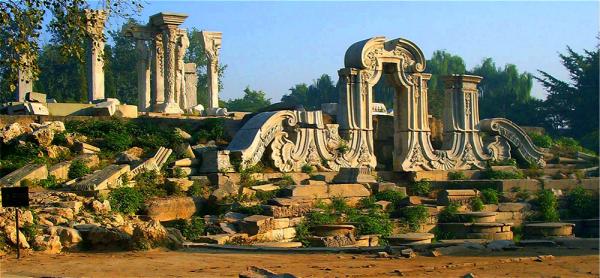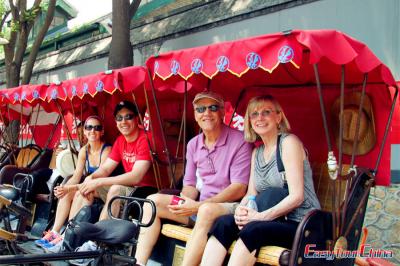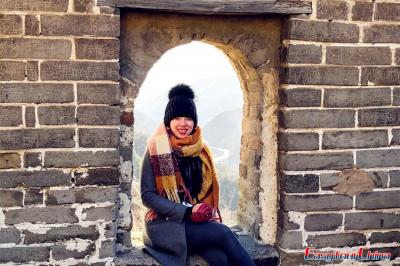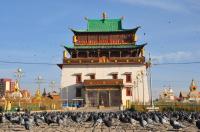Old Summer Palace (Yuanmingyuan Park)
The Yuanmingyuan Park or Old Summer Palace in Beijing was a large imperial garden of the Qing Dynasty in China, consisting of the Yuanmingyuan Garden, the Qichun Garden and the Changchun Garden. The Old Yuanmingyuan Garden was the largest, so it was collectively called the Yuanmmingyuan Park (also known as the Three Gardens of the Old Summer Palace). The construction of the Old Summer Palace was carried out and expanded by five emperors: Kangxi, Yongzheng, Qianlong, Jiaqing, Daoguang and Xianfeng. It took more than 150 years to complete.
Yuanmingyuan not only brings together a number of famous gardens in Jiangnan, but also transplanted Western garden architecture. It was the largest museum in the world at that time, which was a collection of gardening art from ancient and modern China and other countries.
Old Summer Palace Facts
Brief History of Old Summer Palace
With a history of more than 300 years up to now, the Old Summer Palace, also known as Yuanming Yuan in Chinese, which means “Gardens of Perfection and Brightness”, was a royal private garden. It was first built in the reign of the Emperor Kangxi of Qing Dynasty. And then he bestowed it to his forth son Yinzhen, who later became the Emperor Yongzheng, and named the garden “Yuanming Yuan” in 1709.
Over the next 150 years, the Old Summer Palace had been adjusted the landscape, and expanded into 3 parts – Yuanming Yuan (Garden of Perfection and Brightness), Changchun Yuan (Garden of Eternal Spring), Qichun Yuan (also named Wanchun Yuan, Garden of Elegant Spring), covering a total area of 350 hectares, of which, the water area is about 140 hectares. The large geographic area, excellent skills of construction, elegant garden style of a combination of Chinese and Western elements, numerous cultural & art collections, a wide variety of animals and plants made the Old Summer Palace being praised as the “Garden of Gardens” at that time.
In 1860, the Old Summer Palace was robbed, burned and destroyed by French and British troops during the Second Opium War. Later, the Tongzhi Emperor prepared to the reconstruction of Old Summer Palace for the residence of Empress Dowager Cixi. The proposed renovation area was over 20 sites with a total of more than 3,000 halls. However, less than 10 months after the project started, it was forced to suspend maintenance due to depletion of financial resources. After that, although Empress Dowager Cixi renovated the Summer Palace, she did not restore the Old Summer Palace.
In 1900, the Eight Power Allied Force invades Beijing, and then the Old Summer Palace was burnt in the fire and ruined again, left nothing but rubble from that time.
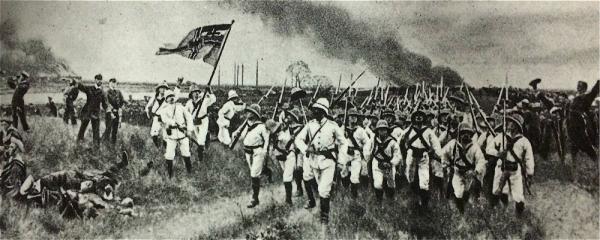
In 1988, the Old Summer Palace was officially open to the public. We and future generations can only through the wreckage to catch a glimpse of its former glory.
>> Recommended China History Tour on Bullet Train
What to See & Do
Unlike other traditional Chinese gardens, the architecture and gardening of the Old Summer Palace reflects a typical combination of Chinese and Western style. Famous scenic spots including Dashuifa (The Great Fountain Ruins), Wonderland on Fanghu Island, Haiyantang, European Palaces, Wanhuazhen Labyrinth, and each of them have their own typical characteristics.
Dashuifa (The Great Fountain Ruins大水法) – the most spectacular fountain in the Site of European Palaces. Its greatest features are large quantity, magnificent momentum and distinctive conception.
Wonderland on Fanghu Island (方壶胜境) – the most beautiful architecture of the Old Summer Palace. It was built based on people’s imagination of celestial mountains and pavilions.
Haiyantang (海晏堂) – one of the landmarks of the Old Summer Palace, a European style garden landscape architecture. There is a big fountain pool in the center of Haiyantang, which is lined with 12 bronze Chinese zodiac animal head statues in a figure-eight arrangement. And every 2 hours of the day and night, the 12 statues will spray water from their mouth in turn; at high noon, they will spray water together at same time.
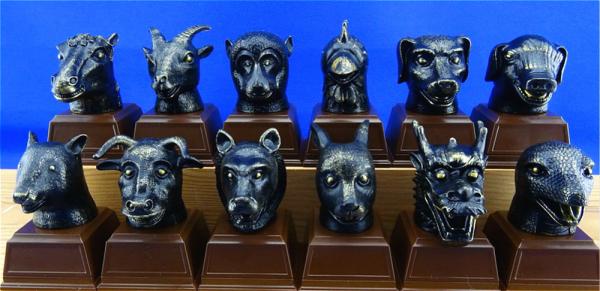
European Palaces (西洋楼) – located in the northwest of Changchun Yuan, composed of more than 10 buildings and gardens, which is famous for its distinctive fragmentary beauty of western architectures.
Wanhuazhen Labyrinth (万花阵) – a garden modeled after the European labyrinth, and its main feature is the white western style pavilion surrounded by 4 feet high carved brick walls. Although the diameter distance from the entrance to the central pavilion is less than 30 meters, it is easy to get in but difficult to get out. In Qing Dynasty, the emperor liked to sit in the central pavilion, and enjoy the beautiful view of palace maids carrying lotus lanterns made of yellow silk, flying to run in the paths, and who first arrived at the pavilion would receive the reward from the emperor.
Of course, there’re other charming spots in the Old Summer Palace, like Jiuzhou Qingyan (九洲清晏), Apricot Blossom Spring Villa (杏花春馆), Ruins of The Magnanimous World (坦坦荡荡), Ruins of Hanjingtang (含经堂), Yuanyingguan (远瀛观) Ruins North side, Ruins of the Fangwaiguan (方外观), etc.
The Old summer Palace Before Destruction
Before its destruction, the Yuanmingyuan Garden could be roughly divided into five scenic areas: the Palace Area, the Kyushu Scenic Area, the Northwest Scenic Area, the Fuhai Scenic Area and the Northern Scenic Area. Changchunyuan is east of the Yuanmingyuan Garden and was built by Emperor Qianlong for his return to the government to recuperate. It was mainly a place for feasting and entertainment. The Garden of Eternal Spring consists of several small gardens with connected bodies of water. The Jiaqing Emperor often came here to work and relax. After the Daoguang Dynasty, it became the garden residence of the Empress Dowager and the Dowager Consort.
The original architectural layout of the Old Summer Palace was centered around the forty scenic spots of Yuanmingyuan Park, the thirty scenic spots of Qichun Garden, and the over twenty scenic spots of Changchun Garden. With mountains and water systems as the backbone, it is equipped with strange rocks, flowers and trees.
After being destroyed, more than 150 scenes were reduced to ruins, among which the more significant ones included the Zhengda Guangming Ruins, the Jiuzhou Qingyan Ruins, the Changchun Xianguan Ruins, the Luoyue Kaiyun Ruins, the Bi Tong Academy Ruins, the Xifeng Xiuse Ruins, and so on.
Opening Hours & Ticket Prices
Opening Hours:
January, February, March, November & December: 07:00 – 17:30
April, September & October: 07:00 – 18:00
May, June, July, August: 07:00 – 19:00
Entrance Fee: CNY 10
Site of European Palaces: CNY 15
Exhibition Hall of Panoramic Model of Yuanming Yuan in Its Heyday: CNY 10
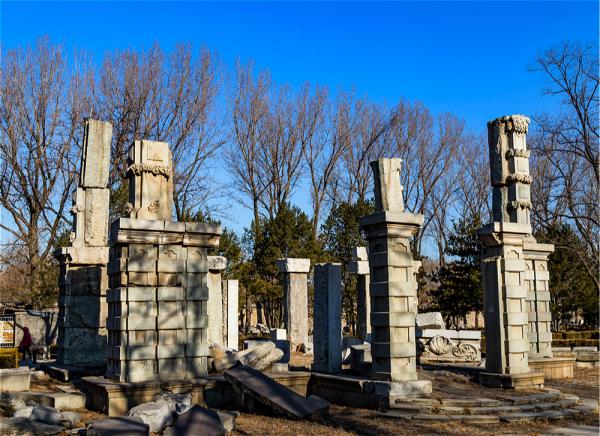
Note:
1. Admission free for children under 6 years old (6 years old included) or under 1.2 meters (1.2 meters included);
2. Admission free for seniors (age 65 and older) with a senior citizen card or an ID card;
3. Admission free for persons with disabilities (relevant ID required);
4. Half-price admission for seniors aged 60 to 64 (valid ID required);
5. Half-price admission for minors aged 18 or under 18 years of age, and full-time university undergraduates or college students (valid ID required), excluding graduate students, short-term trainees, or adult students in continuing education programs;
6. Tickets are valid only for the date sold and they are not refundable or changeable.
Recommended Time for a Visit: 3 hours
How to Visit Yuanmingyuan Palace
You can choose to walk, take a scenic shuttle bus, or a bike to visit Old Summer Palace.
1. Eastern Sightseeing Bus:
2. Circular tour bus:
3. Western Sightseeing Bus:
4. Bicycles in the Old Summer Palace
Self-service rental by scanning the code with wechat
Charging standard:
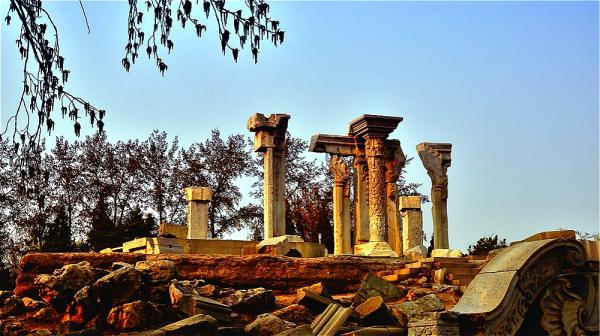
Eating and Shopping at Old Summer Palace
Restaurant recommendations: Qichunyuan Food Court and Dashuifa Food Court.
Recommended cultural and creative stores: Zhengjue Temple Museum Store, Jianbi Pavilion Cultural and Creative Store, SAN Kong Bridge Cultural and Creative Store, and Qing History Bookstore.
How to Get Here
The Old Summer Palace (Yuanming Yuan) is located northwest of Beijing City center, and adjoins the present-day Summer Palace.
By Subway:
Take Subway Line 4, get off at Yuanming Yuan Station, and get out from Exit B.
By Bus:
East Gate: Take Bus 365, 432, 562, 614, 656, 664, 681, 717, 982, Special Line 4, Yuntong 105 or Yuntong 205, get off at Yuanming Yuan East Station, and you will arrive at the gate of Changchun Yuan.
South Gate: Take Bus 319, 320, 331, 432, 438, 498, 601, 626, 628, 664, 690, 696, 697 or Special Line 6, get off at Yuanming Yuan South Station, and you will arrive at the gate of Qichun Yuan.
Travel Tips
1. Facilities in the Old Summer Palace: free wheel chairs, courtesy umbrellas, water dispensers, touch screen inquiry machine, computers, etc.
2. Location of the Tourist Service Center: in the east side of the square outside the gate of Qichun Yuan.
3. In order to maintain the natural ecological environment of the Old Summer Palace, please do not pick flowers, gather wild herbs, collect mushrooms, etc.
Old Summer Palace vs Summer Palace
Although both were built during the Qing Dynasty, the Summer Palace is the best preserved royal garden and is already a World Heritage Site, while the Yuanmingyuan Park was burned down in 1860 and 1990 and is partially under reconstruction.
The Summer Palace is recommended for anyone travelling in Beijing, while the Yuanmingyuan Park is recommended for history buffs and photography enthusiasts.
Plan a Beijing Old Summer Palace Tour with ETC
Don’t miss the opportunity to customize a personalized Beijing tour package with an unforgettable experience in this unique garden. Our China travel experts will listen to your wishes and specific needs, and provide insider advice.
Check out some of best-selling China tours:
